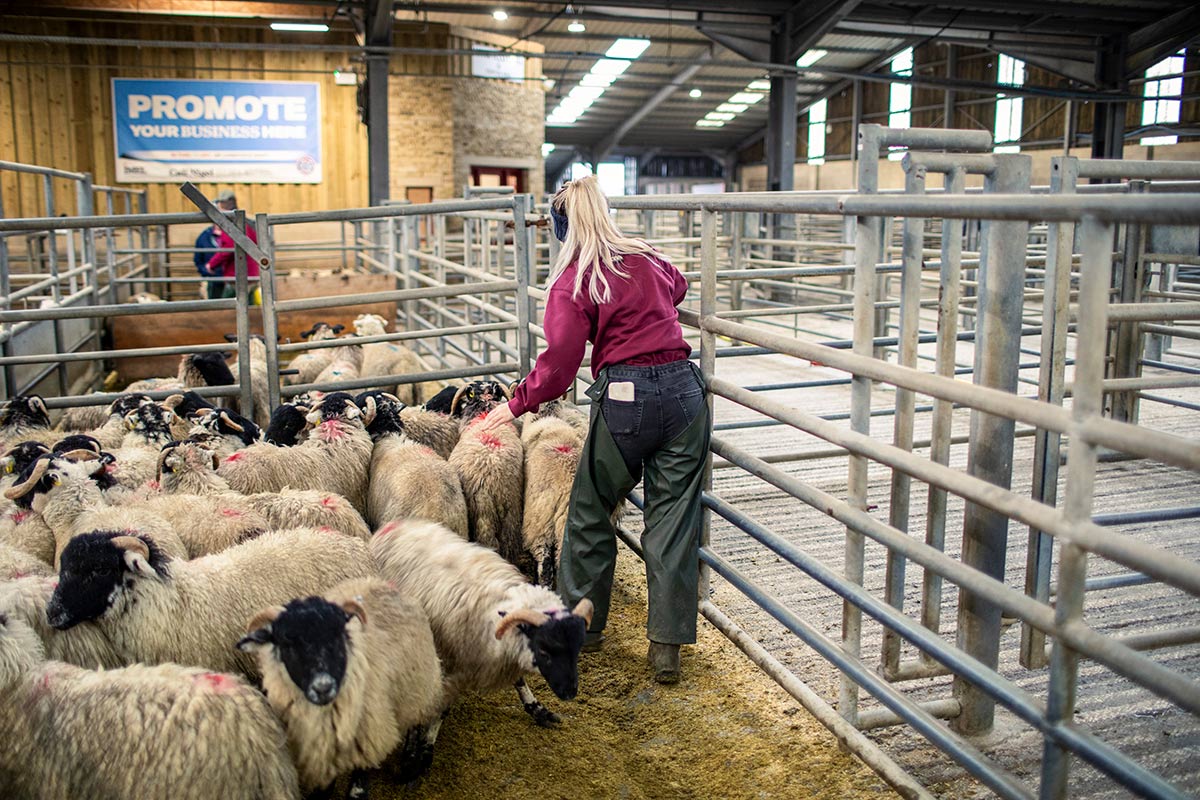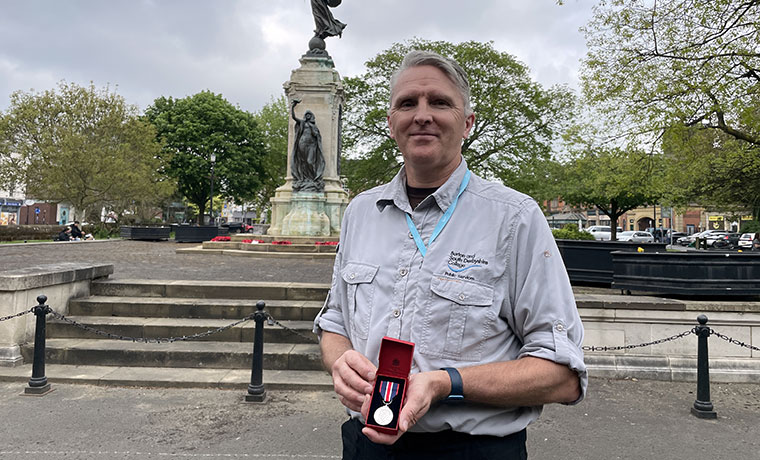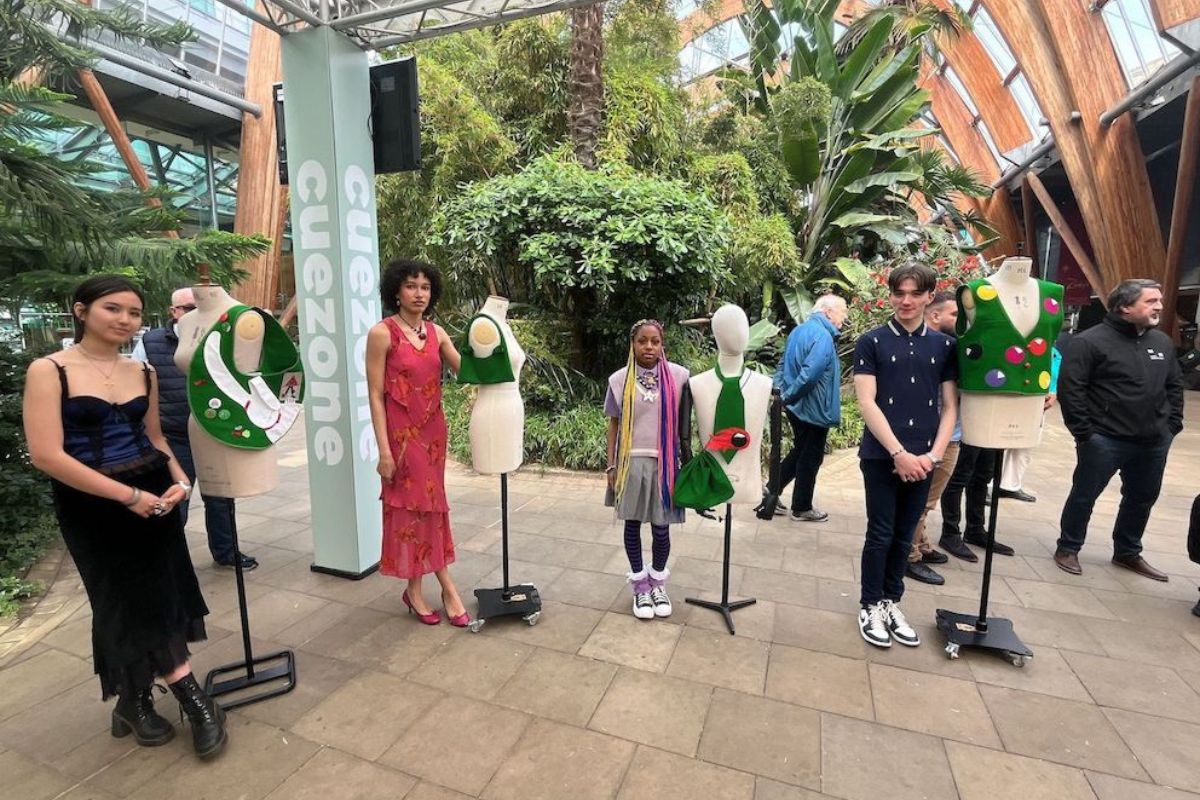Closing the gender gap in science and technology

A significant gender gap persists in many STEM fields. To mark International Day of Women and Girls in Science, we look at how early intervention and collaboration between the private, charity and education sectors can accelerate progress towards gender parity and inclusion.
11 February marks International Day of Women and Girls in Science: the UN’s annual day dedicated to promoting the full and equal access of girls and women in science, technology, engineering and maths (STEM).
Whilst the STEM sector is continuing to grow rapidly – with over 1.9 million STEM professionals needed in the UK by 2035 – women remain underrepresented in many areas of the industry, including computer science, AI and engineering. Government figures show that women still only make up around a quarter of the total STEM workforce, as well as typically earning less than men.
Barriers exist for women and girls in STEM at multiple levels, from school to home, the workplace to wider society. The all-pervasive nature of these challenges makes it a difficult cycle to break. Yet closer partnerships between the private, charity and education sectors offers cause for optimism and opportunities to accelerate the pace of change. By pooling resources and taking targeted, collective action to improve learning and networking opportunities in STEM, we can make progress in addressing the gender imbalance at an early age.
Understanding the barriers
It is important to understand that societal norms and stereotypes influence the interests and career ambitions for both girls and boys from a young age. For example, a joint UCL study into children’s career aspirations found that boys tend to be attracted to technical and physical occupations, and girls to caring and creative jobs. Of the 13,000 UK primary school children surveyed, nearly double the number of boys wanted to become scientists compared to girls, and over four times as many boys wanted to become engineers (civil, mechanical, electrical) than girls.
These stereotypes are then embedded further by a lack of female role-models pursuing STEM education and related careers, to provide much needed leadership, visibility and mentorship to other women and girls. Tellingly, less than half of British adults can name a female scientist, according to a poll commissioned by Teach First. A lack of clear representation makes it difficult to challenge the stereotypes learned early on.
Once women do enter the STEM workplace – despite already competing against the odds – barriers continue to exist that disadvantage women pursuing STEM related careers. Bias in the recruitment and promotion processes afford opportunities disproportionately to men, whilst workplace cultures, processes and policies in often male-dominated environments may not be conducive to nurturing and supporting female talent. This can range from lack of sponsorship opportunities for women to poor flexible working policies. According to the STEM Returners Index 2023, 24% of women returning to the engineering industry after a career break report recruitment bias, compared to 9% of men.
Growing awareness of the root causes of these gender imbalances is a step in the right direction. However, understanding must translate into action. This is where partnerships between private companies, charitable organisations and the education sector can play an important role in shifting the needle towards gender parity and inclusion.
Intervening early to challenge stereotypes
As a priority, we need to focus efforts at an early age before unhelpful stereotypes take hold. Whilst change and interventions are clearly needed at all levels to break the cycle of underrepresentation, given data shows that gender stereotypes are already embedded by the age of seven, we must begin tackling them before then.
The education sector is an obvious battleground for changing stereotypes, thanks to the direct, formative role teachers and schools play in shaping children’s perceptions of the world. However, this must be a joint endeavour, with support and drive from the private and charitable sector. Private companies must lend their weight and resources to schools to advance girls in STEM, whether that be through sharing networks, expertise, equipment, sponsorship or funding. As well as leading by example with clear female representation in STEM roles and supportive policies for women in the workplace, they must realise the opportunity to invest in nurturing the female STEM professionals of tomorrow. Meanwhile, many charities are doing brilliant work on targeted interventions for young people in this space – initiatives that schools could greatly benefit from.
In practice, this could mean collaboration around tailored curriculum materials that challenge gender stereotypes, and training teachers and educators to be more aware about how they position certain subjects or tasks. For example, as an independent charity, The PA Foundation aims to help those from disadvantaged backgrounds access education, skills, and careers, including young people in STEM-related fields. The Foundation receives financial support from private sector companies, and is working with other charity partners on teaching resources – including Tech She Can, which have produced educational materials to inspire four-year-old girls about a future career in technology.
Formal learning opportunities
Charities and the private sector can also actively support educational institutions in providing more formal education and learning opportunities in STEM. For example, the social enterprise Stemettes is helping raise the visibility of technical careers among girls, young women and non-binary persons in the UK through coding bootcamps, hackathons, and in-class mentoring. Private companies can offer facility tours and field trips so students can see STEM jobs in action; send company engineers, technicians or AI specialists to speak with girls about careers in STEM; or create apprenticeship and training programmes to develop the talent pipeline.
Focussing on the skills and subjects of the future like Generative AI and those needed in the Fourth Industrial Revolution will not only ensure women and girls are not left further behind, but that they are also driving forward developments and discoveries that will be inclusive to all.
Furthermore, all-female cohorts and learning groups can help to address the imbalance, providing safe spaces to learn and be surrounded by encouraging peers as well as incentives like scholarships and bursaries aimed at women to pursue STEM-related education post-secondary school.
Promoting networks and connections
We also need to increase access to networks, role models and mentors, whether that be through targeted mentor matching programmes, or simply by being more inclusive in the opportunities available to represent women and girls from panels to publications. Charities and private sector organisations can support schools with this through establishing regional STEM networks and events or creating public databases of female professionals in STEM fields who would be willing to mentor students.
Ideas like ‘you can’t be what you can’t see’ and ‘pay it forward’ can help in pushing this agenda forward in supporting women and girls to have increased visibility and support to inspire the next generation and those around them.
It is clear that the systemic barriers to closing the gender gap in science and technology permeate at many levels but collectively we have the understanding and tools at our disposal to make a difference. Collaboration between the education, charity and private sectors can unlock opportunities and accelerate progress. Addressing these issues in the workplace is hugely important – but we need end-to-end action starting as early as possible to help the next generation of female talent thrive.
By Anita Chandraker, Chair of The PA Foundation and Jack McMahon, Head of The PA Foundation
FE News on the go
Welcome to FE News on the Go, the podcast that delivers exclusive articles from the world of further education straight to your ears.
We are experimenting with Artificial Intelligence to make our exclusive articles even more accessible while also automating the process for our team of project managers.
In each episode, our thought leaders and sector influencers will delve into the most pressing issues facing the FE.











Responses